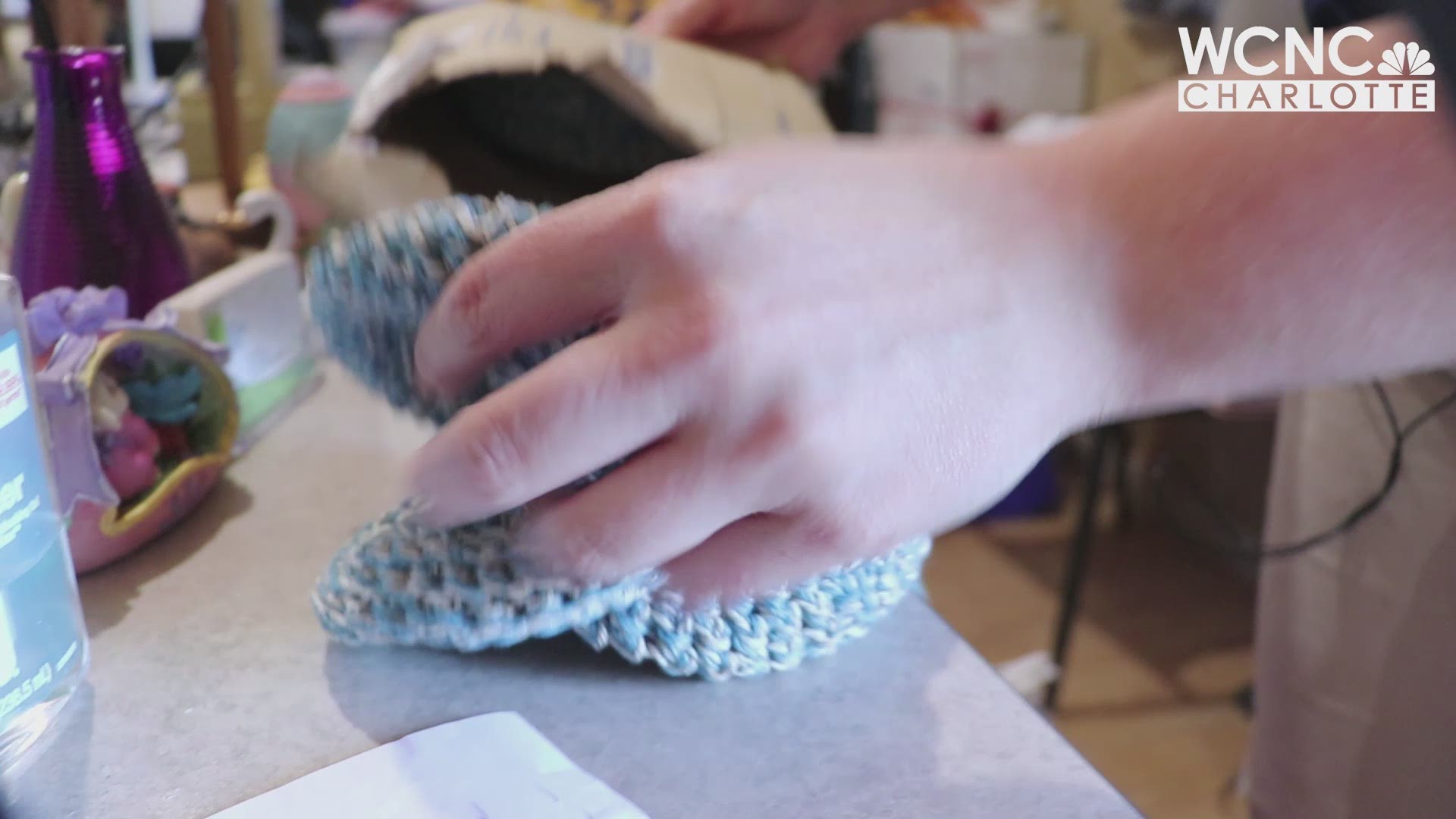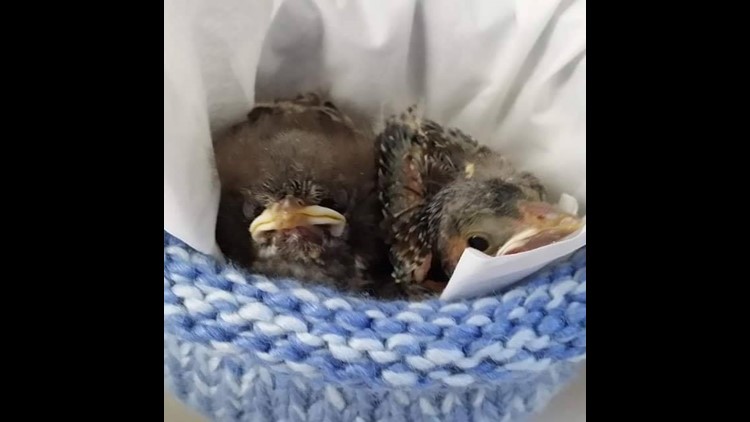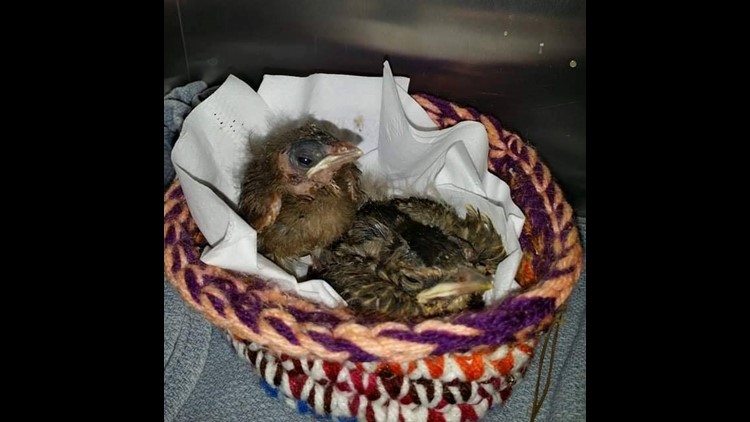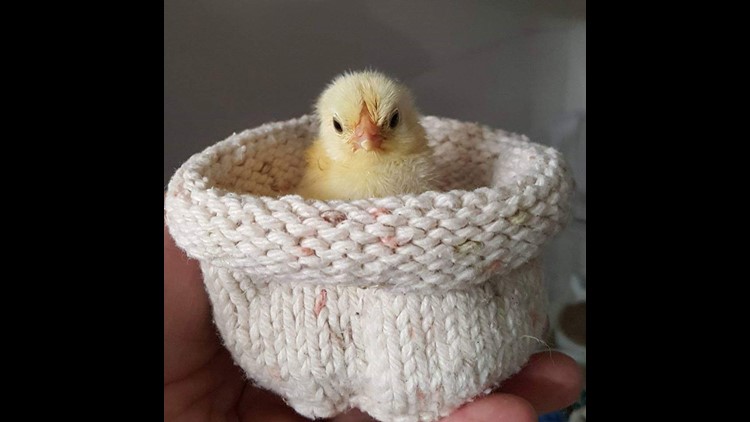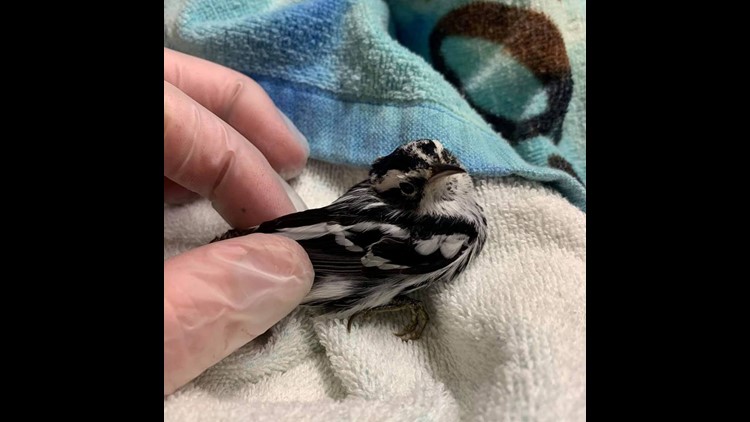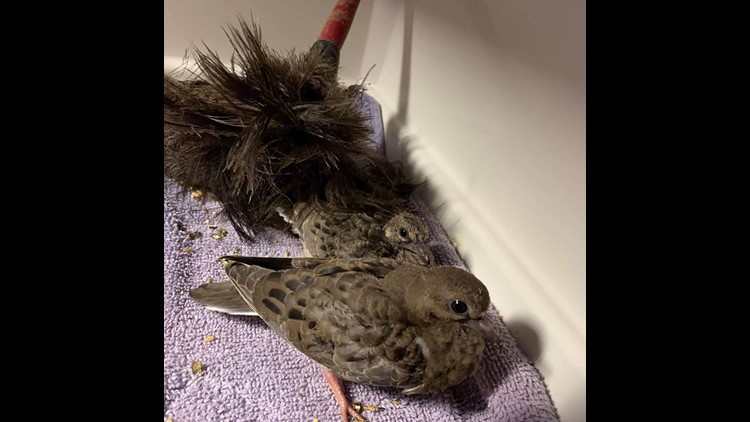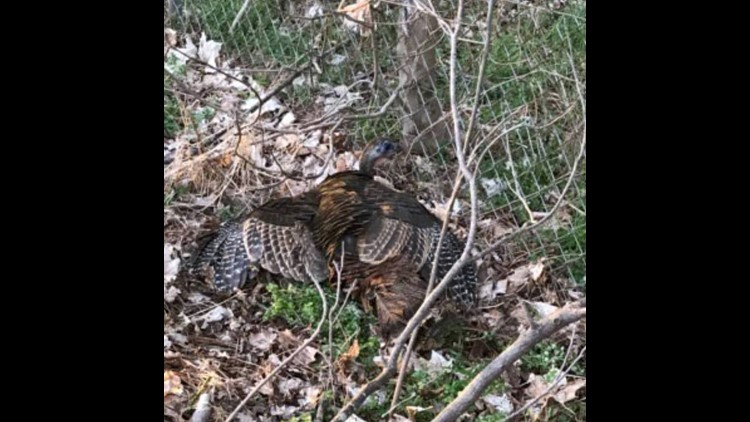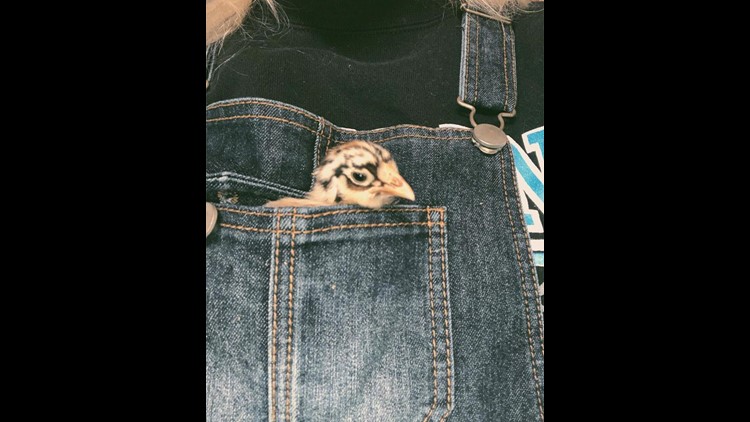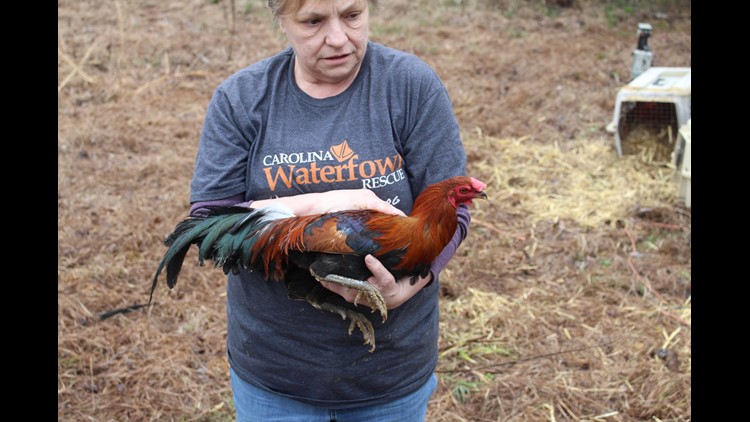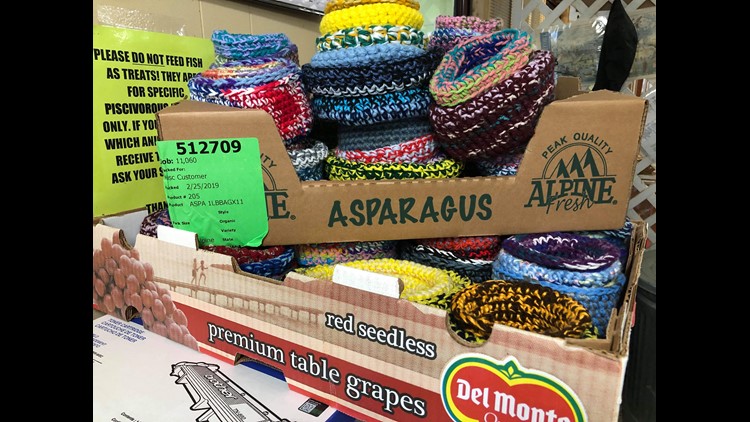CHARLOTTE, N.C. — When the Carolina Waterfowl Rescue group in Indian Trail posted a plea to the community asking for knitted and crocheted nests for their baby birds, they never expected thousands of people around the country to donate.
It all started back on March 20th, Carolina Waterfowl did what they do every year, asked the community for help in rehabilitating the influx of songbirds they're expecting this season.
"We look for nests every year," Bayleigh MacHaffie, a wildlife rehab specialist for CRW, said. "Ones that people can crochet put together so that we can put our songbirds into them when we do get them in."
MacHaffie said for whatever reason, this year, the post quickly went viral, reaching people as far as Seattle.
"Thankfully, everyone is sort of running with it. It's a good way to keep engaged with the public in what we do and why we use these things, and people get really excited about it," MacHaffie said.
March is 'baby season,' which is typically when the rescue group sees a sudden increase in abandoned or injured baby birds.
"In the past, we've gotten in around 3,000 (baby birds) in the summer. It's a lot of songbirds," MacHaffie said.
Carolina Waterfowl Rescue wants to stress the fact that they'll never reach a point where they won't ever need knitted or crocheted nests.

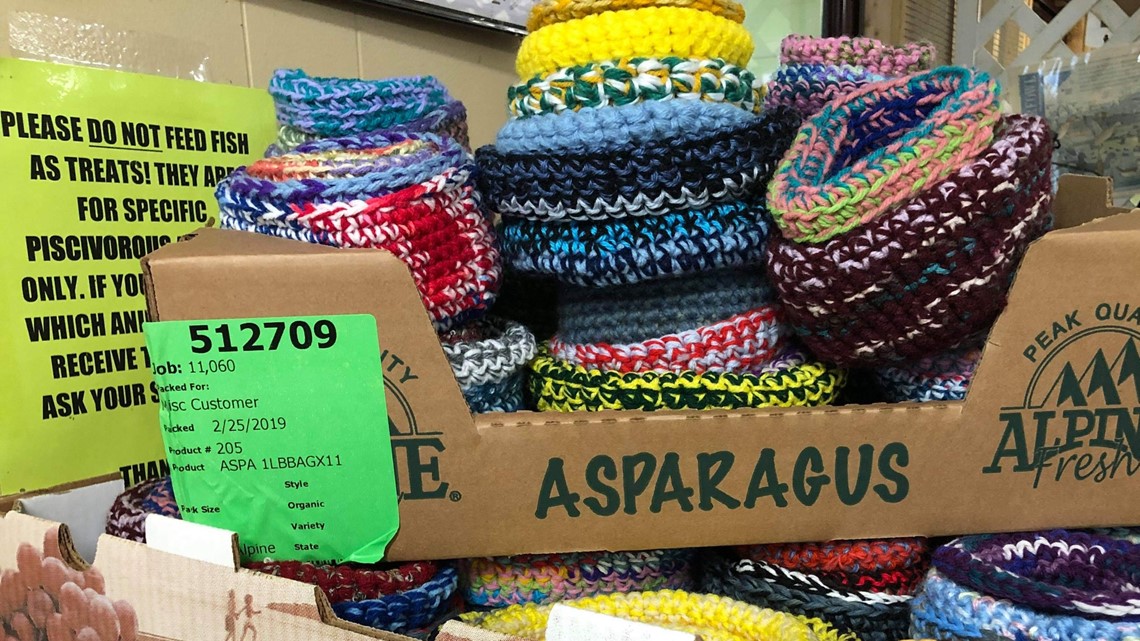
"We do have a lot that have come in," MacHaffie said. "We could always use a little bit more and even if we don't use them we can send them to other people who we know that does need them."
The homemade nests that get delivered to the CRW group are for the baby songbirds, but the handwritten cards that usually come with them.. those are for the staff.
"We encourage that, if anyone does send in nests I mean tell us your story. Tell us how you found us. Tell us why you're sending us nests. I mean we love to read those," MacHaffie said. "It really makes it a personal experience."
Every single package that gets delivered to the wildlife rescue center is opened and read by a staff member at the group.
"It is a huge relief for us to get in these things and I mean you're helping us," MacHaffie said. "So we would love to be able to sort of see who's on the other side of this nest and know you're appreciated."
MacHaffie said since they made the initial Facebook post last week, they've received hundreds of packages full of baby bird nests and handwritten cards. Some of the letters read, "please let us know if you need more nests," or "please keep us updated on the baby birds."
"It's just so great that people go through and make the effort to try and help like this. It's a great reminder for us that people care," MacHaffie said.
HOW DO THE NESTS WORK?
The Carolina Waterfowl Rescue Center uses all different sizes of homemade nests. First, they are lined with tissue paper to ensure their feet don't get caught in the yarn.
MacHaffie said the nests are important for the baby bird's development because if they don't have a nest holding them in when they grow, their legs end up getting splayed out.
Staff members check on the baby birds every 30 minutes.
Once inside the homemade nests, the nests and the babies are gingerly placed inside an incubator to keep them warm. MacHaffie said not all baby birds are placed inside the incubator.
"Newly hatched birds, those guys will definitely go inside an incubator, but fledglings don't necessarily need an incubator," MacHaffie explained.
CAN'T KNIT? HERE'S HOW YOU CAN HELP
Community rallies around Charlotte rescue group
The spike in interest for the Carolina Waterfowl has also given the staff at the center the chance to educate the public on what to do if they find an abandoned baby bird.
"A lot of the birds we get in are completely healthy, and what we end up doing is re-nesting them," MacHaffie said. "We have different flow charts for people to follow for people who find birds."
Carolina Waterfowl Rescue is trying to move out of their current location and into a larger area with less vehicle traffic.
"It’s time to move on to a better and bigger space where we can be open to the public for tours, host educational programs, have an adoption area, and much more. Our plans are to include a rescue farm, where we can teach people about the plight of farmed animals, classrooms for scouts and homeschool groups, and schools. We also plan to have an adoption center so you can view and pick out animals for adoption, as well as speed up our adoption process. We would like you to be able to come see animals you have rescued and visit them at the farm, and so much more!!"
Knitted Artificial Bird Nest
Directions:
On size 5 dpn’s cast on 54 stitches using 2 or 3 strands of yarn so the nests are tightly knit and will stand up in a bowl shape on their own! (divide sts up into 18 sts/needle). Work in knit (stockingette is automatic on dpn’s) stitch for approximately 3 inches. Begin decreasing for the crown as follows:
Next row: *K 7, k 2 tog* repeat to end
Next row: *K 6, k 2 tog* repeat to end
Next row: *K 5, k 2 tog* repeat to end
Nest row: *K 4, k 2 tog* repeat to end
Next row: *K 3, k 2 tog* repeat to end
Next row: *K 2, k 2 tog* repeat to end
Next row: *K 1, k 2 tog* repeat to end
Clip off yarn leaving a tail of about 6 inches.
Using yarn needle, slide yarn needle under all stitches on needles, and draw tight to close up the end. Knot
Make sure the nest can stand up in a bowl shape on its own!
CROCHETED Artificial Bird Nest
Several yards of Worsted weight yarn. Hold 2 or 3 strands together for a TIGHT stitch!
Size H hook
Starting ring: Crochet 3 chains using 2 or even 3 strands of yarn held together, and slip stitch last chain to first chain to make a loop or ring.
Round 1: Chain 2 (this counts as your first “stitch), work between 10 – 15 single crochets into th ring (depending on what thickness yarn you are using). Slip stitch the last single crochet to the top stitch in the chain 2 that started this round.
Round 2: Chain 2. Single crochet into each of the next two stitches, then do 2 single crochet’s into the next stitch, single crochet into the next two stitches, then 2 single crochet’s in the the next stitch. And on and on around the circle. Slip stitch your last single crochet into the top of the chain 2 that started this round.
Round 3, 4, 5, 6, and on: Repeat Round 2 over and over, until your circle is at least 3” big. You can make your nest with a bottom as small as 3” big, up to maybe 6” big.
Once you have made the bottom of the nest from 3” to 6” big, from all rounds thereafter, crochet ONE single crochet into each stitch. You will see your “sides” begin to form. Crochet until the sides are about 2 – 3” high. Bind off and weave in loose ends.
If you like to knit or crochet you can make these nests for baby birds. Mail them to:
CWR
Po box 1484
Indian trail NC 28079

